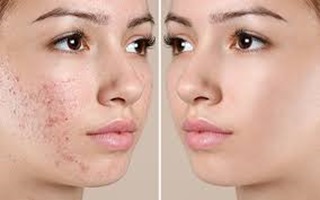Thigh Gap Meaning ~ The Truth About This Trend
Thigh Gap Meaning ~ The Truth About This Trend

What does thigh gap mean? Space between a person’s thighs
Overview of the Thigh Gap ~ What Is a Thigh Gap and What You Should Know About This Ideal Beauty
- A thigh gap occurs when the inner thighs of a person do not contact while standing with their feet together.
- Some people cannot achieve a thigh gap due to their bone anatomy.
- Thigh gaps are a problematic beauty ideal that can cause overexercising, severe dieting, and anxiety in some people because it is mostly determined by bone form.
Important: If you believe that your desire for a thigh gap is causing you to have an unhealthy relationship with food or your body, talk to your primary care practitioner or a psychologist. They can assist you in determining the best treatment plan for you.
What is a thigh gap?
When standing upright with your feet together, the “thigh gap” is the distance between your thighs.
It simply means that someone’s inner thighs do not contact or brush against each other.
“[The thigh gap] is not a health standard, but rather an aesthetic standard that is frequently recommended for women.”
However, it is an unattainable beauty ideal for many,” says Janet A. Lydecker, Ph.D., a psychologist at the Yale School of Medicine who specializes in obesity, weight, and eating studies.
The Thigh Gap Was Originated by Spongebob
Yes, the rumors are correct. This legendary sponge is a symbol and role model for women all across the world.
SpongeBob represents what women’s legs should be. What’s more, the best part? His thigh gap is a completely attainable aim for women of all body types.
Besides, what woman doesn’t want to be like a cartoon sponge whose age remains one of the century’s largest unresolved questions?
Again, the term came up on the internet in 2010, although it did not become widely used until 2013.
Images of women with thigh gaps, mainly models, were posted on social media and blogs during this time period. The photographs, dubbed “thinspiration,” were intended to inspire viewers to slim down.
Remember that photographs representing beauty standards, such as the thigh gap, are frequently intentionally positioned or digitally manipulated, and rarely reflect the person’s true appearance.
What causes a thigh gap?
‘Even people who are normally slender may not have a natural thigh gap,’ explains Dr Ross Perry, medical director of Cosmedics. If they have higher sitting adductors [muscles on the inside of your thigh] and a different pelvic bone form.
‘This is due to not just having very little body fat, but also to the width of the hips in comparison to the length of the femoral head [a bone at the top of the thigh].
It will mostly be determined by heredity, bone structure, and the amount of body fat on the individual.’
Also, don’t fall for the snake oil of believing in thigh gap exercises. There isn’t one.
Genes determine the thigh gap
Body type, skeletal structure, and connective tissue length all have a role in whether or not you have a thigh gap.
The first consideration is pelvic form. Without getting too technical, your hips may be wider or narrower in proportion to your knees depending on how your pelvic bones are constructed.
That instance, some people will have more curves, while others will have more boyish legs, even if they are the same weight and size.
Muscle size will also determine whether or not there is a gap – stronger legs (NOT big legs) — the type of thighs that most women want — are more likely to touch.
Skinny thighs with little muscle and contour may not. But thin fat never looked attractive, and it’s certainly not a healthy way to be.
But, like bones, muscles establish their shape and size in part due to heredity – some women’s adductor muscles on the inside of the thigh are thicker higher up, while others are thicker lower, making a thigh gap more common.
Can you get a thigh gap?
The ability of a person to develop a thigh gap is mostly determined by genetic predisposition and bone form.
This means that even naturally slim people may have a thigh gap, while curvier people may have a thigh gap.
“Your bone structure, specifically the width of your hips and the position of your hips within your pelvis, has the greatest influence on a thigh gap.”
It is also influenced by genetics, notably the location of fat storage in your body. As a result, there isn’t much you can do to attain a thigh gap, and you shouldn’t try,” says Elizabeth C. Gardner, MD, FAAOS, an orthopedic surgeon at Yale Medicine and assistant professor of orthopedics at Yale School of Medicine.
Although some people swear by procedures or hacks such as targeted fat loss, inner thigh exercises, or extreme dieting to achieve a thigh gap, these will not work for everyone. And they can be risky over time since extreme calorie restriction can cause bone loss and cardiovascular problems.
According to Gardner, strengthening the inner thigh muscles with “thigh gap exercises” will not enlarge the distance between your thighs.
This is because exercising certain body sections does not result in fat loss in those areas.
How to Obtain a Thigh Gap: Thigh Gap Exercises Are Crazy Easy
So, you’re probably at the point where you’ll go to any length to increase the width of your thighs. Not to worry.
This simple thigh gap exercise can be done anywhere, at any time of day. Simply push your thighs apart while keeping your knees together, whether you’re seated or standing.
Your thighs will eventually learn to stay apart on their own.
You can also put something between your legs, such as a couch or a microwave, to keep them open wide.
That’s all there is to it. There are numerous reasons why a thigh gap is the most crucial aspect of your life. Without one, you’ll have no friends, never meet a guy, and will be miserable for the rest of your life.
Questions
Is having no thigh gap the same as having fat thighs?
Obviously, a thigh gap is influenced by body fat levels. If a person is a) slender, b) has low adductor muscles, and c) has the correct pelvic bone shape, but has a lot of additional body fat, they may not have a thigh gap due to the extra fat around their thighs.
A slender person, on the other hand, may not have a thigh gap if they have greater sitting adductors and a different pelvic bone structure.
Thigh gap benefits ~ Is it good to have a thigh gap?
The absence of a thigh gap does not signal a health problem if an individual is of normal weight. The thigh gap is purely a cosmetic ideal.
Because some women are genetically predisposed to carry additional fat around their inner thighs, meeting this criterion can be difficult.
Is a thigh gap good or bad?
Are thigh gaps healthy? The presence or absence of a thigh gap has no bearing on your internal wellness.
We don’t blame you if you believe that a thigh gap is determined by physical fitness, body weight, or food.
The gap between legs meaning
A thigh gap is the distance between someone’s inner thighs when they are standing with their knees straight and their feet together.
It is a so-called beauty standard that is specifically applied to women’s bodies.
No thigh gap ~ Is it normal to not have a thigh gap?
The ability of a person to develop a thigh gap is mostly determined by genetic predisposition and bone form.
This means that even naturally skinny persons may not have a thigh gap and that someone who is curvier may have one.
What is the name for the space between a woman’s legs?
A thigh gap is a distance between certain women’s inner thighs when they stand erect with their feet touching.
Inner thigh gap ~ What causes the inner thigh gap?
It’s a genetic Phenomenon.
The breadth of your hips determines whether you have a thigh gap more than your body weight, a balanced diet, or strength training.
What causes a thigh gap
The ability of a person to develop a thigh gap is mostly determined by genetic predisposition and bone form.
This means that even naturally slim people may not have a thigh gap, while curvier people may have a thigh gap.
Thigh gap workout ~ Thigh Gap Exercises
- Sumo squats. Sumo squats are among the best exercises for inner thigh (adductor) muscles.
- Side-lying leg lifts. This is a great Pilates exercise for thighs, abs, and hips.
- Side-lying inner thigh lifts.
- Jumping jacks
- Crossover scissor kicks.
- Deep side lunges.
- Bridge raises.
- Bridge with ball squeeze.


